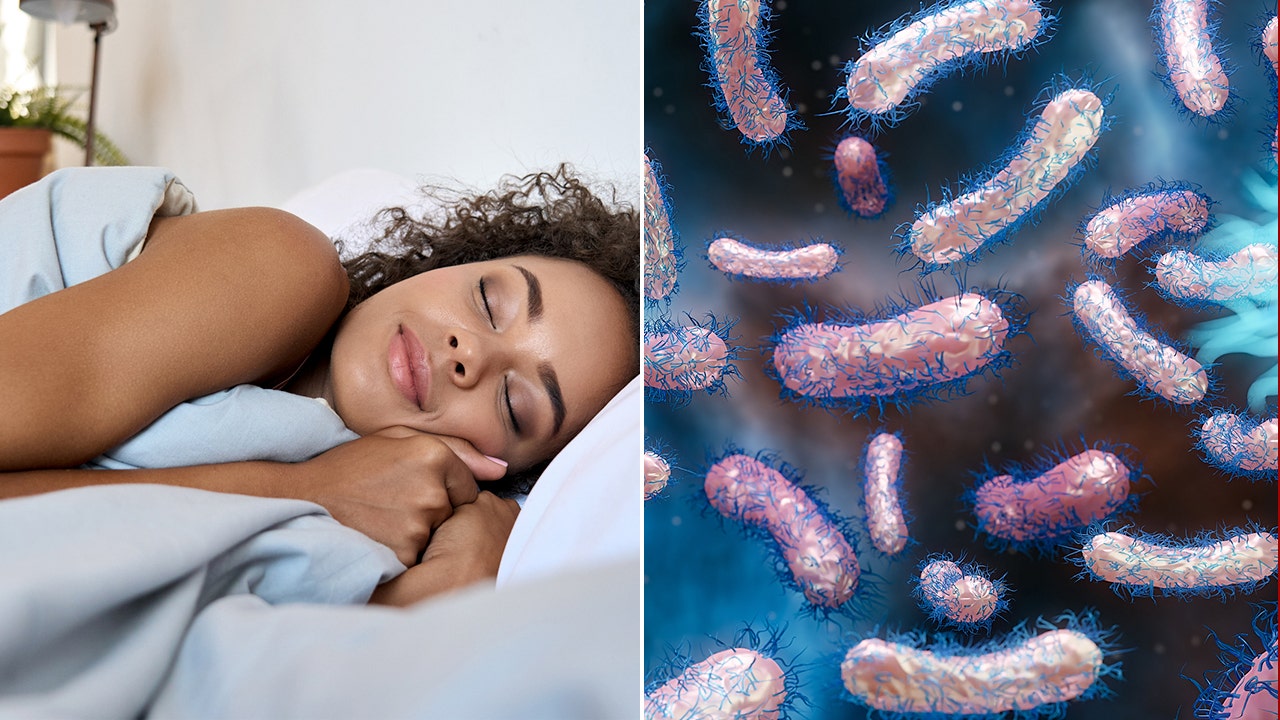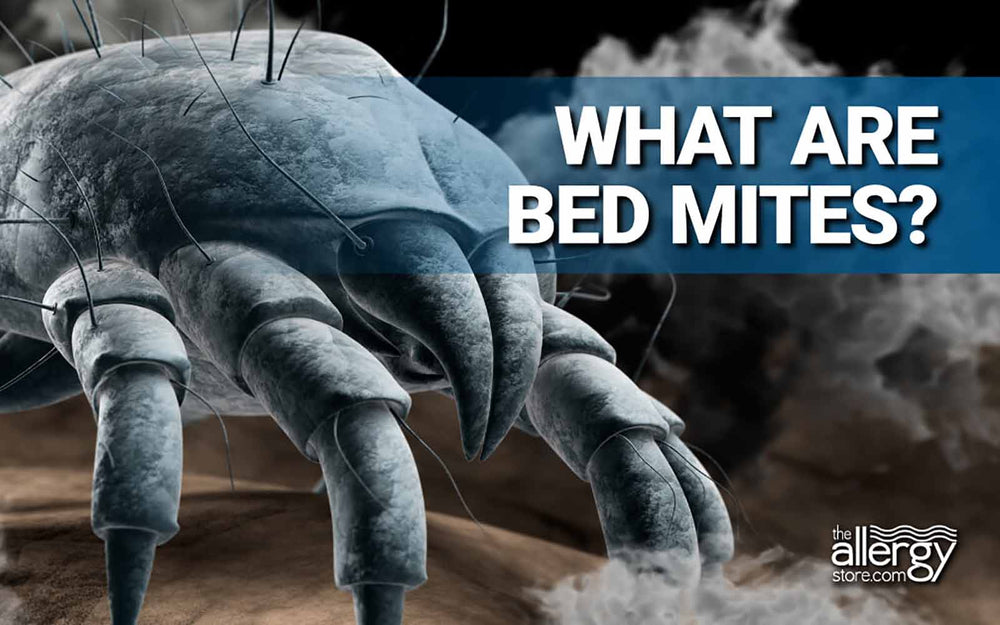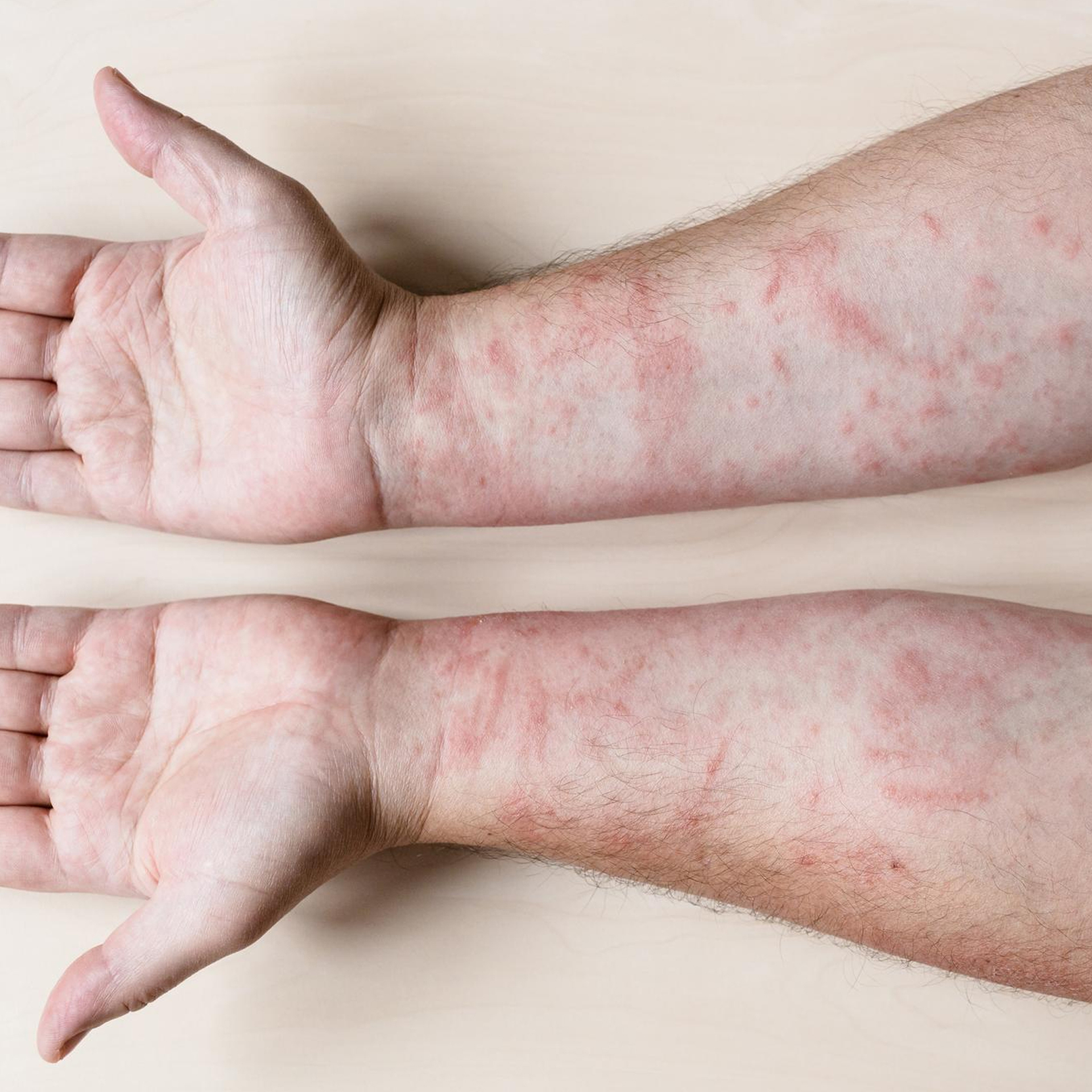The Hidden Dangers of “Sleeping With…” – The Shocking Truth No One Talks About
Sleep Might Seem Harmless, But It Can Hide Health Risks
Sleep is when your body rests and regenerates energy. However, the environment where you sleep plays a huge role in your overall health — especially your mattress, pillows, and bedsheets, which stay in contact with your skin for hours every night.
Without realizing it, many people turn their beds into a breeding ground for bacteria, fungi, and mites, leading to serious skin problems and allergic reactions.

The Viral Image That Shocked the Internet
Recently, an image went viral online showing a man with red rashes and blister-like bumps around his neck with the caption:
“Here are the consequences of sleeping with…”
Many assumed it was related to a contagious disease, but the truth turned out to be something completely different — and surprisingly common.

The Truth Behind It – What Experts Say
According to dermatologists, the skin condition could be a case of shingles (Herpes Zoster) or allergic dermatitis caused by insect bites, parasites, or poor bedding hygiene.
Certain everyday habits can trigger these issues, such as:
-
Not washing bed sheets and pillowcases regularly
-
Letting pets sleep on the bed
-
Using damp, moldy bedding
-
Using harsh fabric softeners or detergents
These seemingly harmless habits allow bacteria, fungi, and viruses to thrive — causing itchiness, water-filled blisters, and even skin infections.

What Is Shingles and Why Does It Reappear?
Shingles (Herpes Zoster) is caused by the Varicella Zoster virus — the same virus responsible for chickenpox.
After a person recovers from chickenpox, the virus can remain dormant in the nervous system for years. When the immune system weakens due to stress, fatigue, or illness, it can reactivate, causing painful, blistering rashes on the neck, shoulders, back, or face.
How to Prevent Skin Infections from Your Bedding
Wash Bedding Regularly
-
Wash bed sheets and pillowcases at least once a week in hot water (above 60°C / 140°F).
-
Dry them directly under sunlight to eliminate bacteria and mites.
Keep Pets Out of the Bed
Even the cleanest pets can carry fleas, mites, and bacteria from outside, which can trigger allergies or skin infections.
Maintain Good Personal Hygiene
-
Shower daily and wear clean sleepwear.
-
Keep your neck, shoulders, and back clean and dry to prevent sweat buildup.
Seek Medical Help Early
If you notice blisters, redness, burning, or pain, visit a dermatologist as soon as possible for proper diagnosis and treatment.
Avoid scratching or applying random creams, as this may worsen the infection.

When Should You Replace Your Bedding?
According to sleep and hygiene experts:
-
Bed sheets & pillowcases: Replace every 1–2 years.
-
Blankets & mattresses: Deep-clean every 3–6 months and replace every 5–7 years to prevent bacterial buildup.
Final Thoughts – “Sleeping With…” Is Not What You Think
Sometimes, “sleeping with…” doesn’t mean another person — it means dust, bacteria, fungi, and parasites hidden in your bed.
A clean sleeping environment not only helps you sleep deeper and feel more refreshed, but also protects your skin and immune system.
Start today — wash your sheets, air out your mattress, and give yourself the healthy sleep you deserve!

Frequently Asked Questions (FAQ)
1. Is shingles contagious?
Yes. Shingles can spread to people who have never had chickenpox, but they will develop chickenpox, not shingles. Avoid close contact until blisters have healed.
2. How to tell the difference between shingles and an allergic rash?
Shingles usually causes painful, blister-like rashes in a band-like pattern, while allergic rashes are itchy, scattered, and not painful.
3. Do you need medicine for neck blisters?
Yes. A dermatologist may prescribe antiviral medication, pain relievers, or topical creams depending on severity. Early treatment helps prevent scarring and nerve pain.





